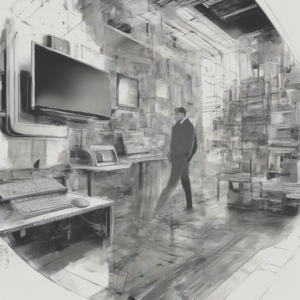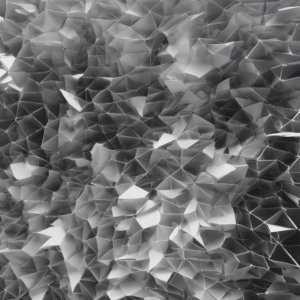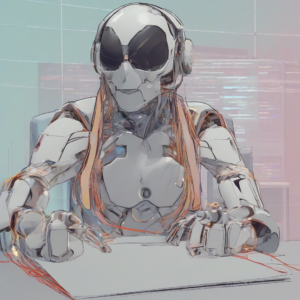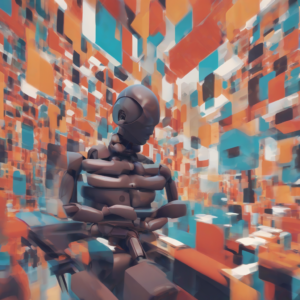The Colossus of Industry: A Deep Dive into Industrial Machinery Manufacturing
Industrial machinery manufacturing forms the backbone of modern economies, powering industries ranging from automotive and aerospace to food processing and energy production. This intricate sector involves the design, engineering, manufacturing, and distribution of complex machines that drive efficiency, productivity, and innovation across a vast spectrum of applications. Understanding this sector necessitates a comprehensive exploration of its multifaceted components, from the initial conceptualization to the final delivery and after-sales support.
The Design and Engineering Phase: Where Innovation Takes Shape
The journey of industrial machinery begins with meticulous design and engineering. This crucial phase requires a deep understanding of the target application, customer needs, and relevant industry standards. Modern design processes often incorporate sophisticated computer-aided design (CAD) and computer-aided manufacturing (CAM) software, allowing engineers to create intricate 3D models, simulate performance, and optimize designs for efficiency and reliability. This phase involves several key steps:
- Needs Assessment and Market Research: Identifying the specific needs of the target market and analyzing competitor offerings are paramount. This includes understanding required throughput, precision levels, safety regulations, and environmental impact considerations.
- Conceptual Design: Developing initial sketches, concepts, and preliminary designs, focusing on functionality, ergonomics, and overall machine architecture.
- Detailed Design: Refining the design using CAD software, specifying dimensions, materials, components, and manufacturing processes. This stage involves extensive calculations, simulations, and stress analyses to ensure structural integrity and operational reliability.
- Prototyping and Testing: Creating prototypes to validate the design and identify potential weaknesses. Rigorous testing under simulated operating conditions is crucial to identify and address any design flaws.
- Finite Element Analysis (FEA): Utilizing advanced computational methods to analyze stress distribution, vibration modes, and thermal behavior, ensuring the machine can withstand the forces and conditions it will encounter during operation.
Manufacturing Processes: Transforming Designs into Reality
Once the design is finalized, the manufacturing process begins, transforming the design blueprint into a functional machine. This involves selecting appropriate materials, employing various manufacturing techniques, and ensuring quality control throughout the entire production cycle. Key aspects include:
- Material Selection: Choosing materials based on their strength, durability, resistance to corrosion, and cost-effectiveness. This often involves a trade-off between performance, longevity, and economic considerations.
- Casting and Forging: These techniques are used to create large, complex components from molten metal. Casting involves pouring molten metal into a mold, while forging involves shaping metal using pressure.
- Machining: Precisely removing material from a workpiece to achieve desired dimensions and surface finishes. This includes techniques such as milling, turning, drilling, and grinding.
- Welding: Joining metal components using heat and pressure. Different welding techniques are employed depending on the materials and required strength.
- Sheet Metal Fabrication: Forming sheet metal into desired shapes using techniques such as bending, punching, and stamping.
- Additive Manufacturing (3D Printing): Building components layer by layer from a digital design, offering increased design flexibility and reduced material waste.
- Assembly: Combining individual components into a complete machine, often involving automated assembly lines for high-volume production.
- Quality Control: Implementing rigorous quality control measures throughout the manufacturing process, including inspections, tests, and audits to ensure adherence to design specifications and industry standards.
Types of Industrial Machinery: A Diverse Landscape
The scope of industrial machinery is vast and encompasses a wide array of specialized machines designed for specific applications. Some key categories include:
- Material Handling Equipment: Machines used for moving, lifting, and transporting materials, including forklifts, cranes, conveyors, and automated guided vehicles (AGVs).
- Metalworking Machinery: Machines used for shaping and machining metal components, such as lathes, milling machines, drilling machines, and presses.
- Packaging Machinery: Machines used for packaging products, including filling machines, sealing machines, labeling machines, and palletizing robots.
- Processing Machinery: Machines used for processing raw materials into finished products, encompassing a wide range of applications depending on the industry. Examples include food processing equipment, chemical processing equipment, and textile machinery.
- Power Generation Equipment: Machines used for generating electricity, including turbines, generators, and transformers.
- Construction Machinery: Machines used for construction and demolition, such as excavators, bulldozers, cranes, and concrete mixers.
- Mining Machinery: Heavy-duty machinery used for extracting minerals and ores from the earth, including excavators, loaders, crushers, and conveyor systems.
- Agricultural Machinery: Machines used in agriculture, including tractors, harvesters, planters, and irrigation systems.
Technological Advancements Shaping the Industry
The industrial machinery manufacturing sector is constantly evolving, driven by advancements in technology and increasing demand for higher efficiency, precision, and automation. Key technological trends include:
- Automation and Robotics: Increasing use of robots and automated systems for manufacturing, assembly, and material handling, leading to higher productivity and improved consistency.
- Internet of Things (IoT): Connecting machines to the internet for remote monitoring, predictive maintenance, and improved operational efficiency.
- Artificial Intelligence (AI): Utilizing AI algorithms for optimizing machine performance, predicting failures, and improving overall efficiency.
- Additive Manufacturing (3D Printing): Revolutionizing the manufacturing process by allowing for the creation of complex components with greater design flexibility.
- Advanced Materials: Development and implementation of new materials with enhanced properties, leading to more durable, lightweight, and efficient machines.
- Digital Twins: Creating virtual representations of machines to simulate performance, optimize designs, and predict failures.
Challenges and Opportunities in the Industry
Despite the significant advancements and growth opportunities, the industrial machinery manufacturing sector faces several challenges:
- Global Competition: Intense competition from manufacturers in developing economies, requiring continuous innovation and cost optimization.
- Supply Chain Disruptions: Vulnerability to supply chain disruptions due to geopolitical events, natural disasters, and pandemics.
- Skilled Labor Shortages: Difficulty in finding and retaining skilled workers with expertise in engineering, manufacturing, and programming.
- Environmental Regulations: Increasingly stringent environmental regulations require manufacturers to adopt more sustainable practices and reduce their carbon footprint.
- Technological Complexity: The increasing complexity of machinery and manufacturing processes necessitates substantial investment in research and development.
However, these challenges also present significant opportunities. Companies that can successfully navigate these challenges and embrace technological advancements stand to gain a competitive advantage and capitalize on the growing global demand for industrial machinery.
The Future of Industrial Machinery Manufacturing
The future of industrial machinery manufacturing is likely to be characterized by increased automation, digitization, and sustainability. We can expect to see further advancements in areas such as:
- Smart Factories: Fully integrated and automated manufacturing facilities leveraging IoT, AI, and big data analytics for optimal efficiency and productivity.
- Sustainable Manufacturing: Adoption of eco-friendly manufacturing processes and materials to reduce environmental impact.
- Customized Machinery: Increased demand for customized and specialized machinery tailored to specific customer needs.
- Predictive Maintenance: Utilizing sensor data and AI to predict machine failures and prevent downtime.
- Collaborative Robots (Cobots): Increased use of collaborative robots that work alongside human workers to improve efficiency and safety.
In conclusion, industrial machinery manufacturing remains a vital and dynamic sector, playing a critical role in driving global economic growth and technological advancement. By understanding the intricacies of design, manufacturing, and technological trends, we can appreciate the immense complexity and significant impact of this colossus of industry.





